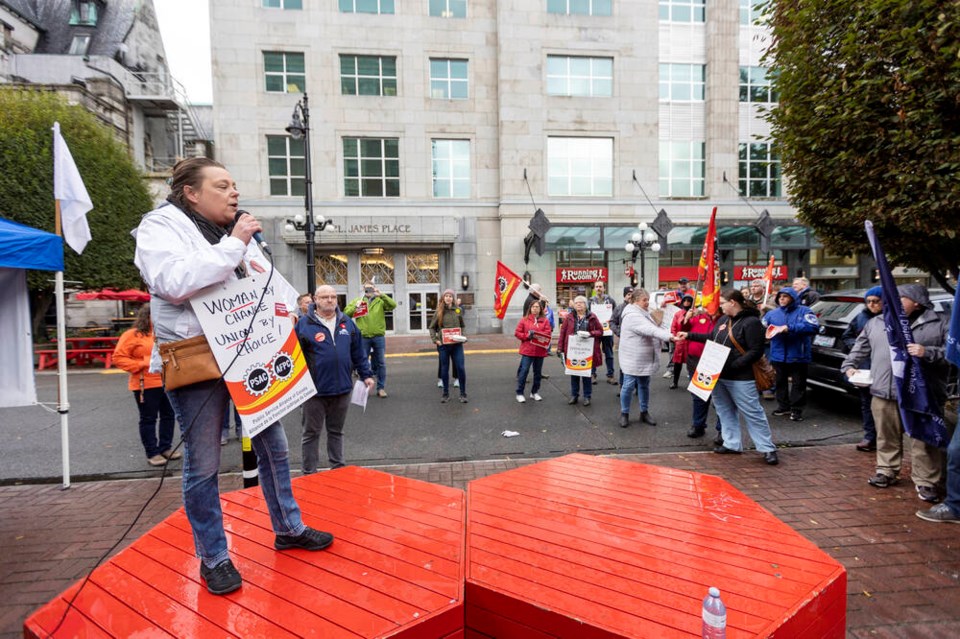It’s been a year of high-profile strikes and negotiations between employers and unions across North America, but two professors from the University of Victoria say B.C.’s labour movement’s decades-long decline has yet to bounce back.
“These sorts of changes take time to manifest,” said Justin Leifso, assistant professor of political science at UVic. “It’s not like you can wake up one day and all of a sudden, thousands of people have been unionized.”
Union membership rates have been declining since the 1980s in Canada as well as other countries, he said, but more recent snapshots suggest that people “by and large support labour movements, unions, and job action” more than they would have even five years ago.
A recent poll from the Angus Reid Institute found that almost half of Canadians say the right to strike outweighs the risk of economic consequences, and that three in five Canadians believe that unions have had a positive impact on the workers they represent.
Justin Wiltshire, assistant professor of economics at UVic, said that B.C. has gone from having one of the highest rates of collective agreement coverage — three percentage points above the Canadian average 25 years ago — to below average today.
“Over that same time, wages have grown seven per cent more slowly in British Columbia than in Canada, on average,” he said. “For part-time workers, that gap widens to 10 per cent.”
Some of those changes coincided with B.C. Liberal party rule in the early 2000s, when the government made “notable” changes to the Employment Standards Act that excluded workers from being covered under that act if they had a collective bargaining agreement that covered anything within that legislation, he said.
Wiltshire said he doesn’t think that B.C.’s slower wage growth can be linked to declining collective agreement coverage rates, but he believes that those changes in the Employment Standards Act have caused negative outcomes for workers, such as the loss of holiday pay for part-time workers.
Even full-time workers, who have earn about $100 to $500 more on an annual basis than the rest of Canada, aren’t being given a good deal, he said. “What does that cover you for a two-bedroom unit?”
“It’s not a particularly attractive proposition: come to B.C., you’ll get to buy less, you’ll get to save less,” he said, adding that it’s likely why the province has the highest job vacancy rate in the country.
Liefso, the political scientist, said that people look for answers outside the system when in times of economic and social rupture.
“We have massive inflation. We live in a place where it costs a million bucks to buy a house,” he said.
“Is this dissatisfaction, particularly among young people, manifesting itself over time with more labour organization, and more job action?” Leifso said. “I think we need a little more time to determine that, but right now, I don’t see a huge upswing.”
Unions are one way to make that happen, but they also need to match the changing demographics and changing expectations among their membership, he said.
“It’s not just about salary levels,” he said. “It’s about equity across a wider range … whether that be class or race or gender or sexuality.”
>>> To comment on this article, write a letter to the editor: [email protected]



